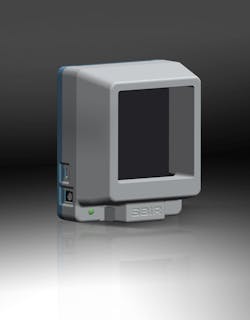Santa Barbara Infrared introduces blackbody system developed for COVID-19 body-temperature detection
Santa Barbara Infrared (SBIR; Santa Barbara, CA), which manufactures advanced infrared (IR) and electro-optical (E-O) test hardware for medical, aerospace, and defense applications, has unveiled what it calls the Nightingale body-temperature reference (BTR) blackbody system for human body-temperature detection.
The company says that the blackbody system provides a highly stable, uniform, low-cost, and easy-to-operate thermal source for the detection of human body temperatures. The BTR system is designed for use in thermal-imaging body-temperature screening systems.
Nightingale has a “set and forget” temperature-programming function that is configurable to Celsius or Fahrenheit, with settable temperature ranges above ambient from 30° to 45°C (86° to 113°F). SBIR’s thermal source/blackbody system has a 3 × 3 in. emitting aperture, a USB communication interface, and average emissivity of >0.950 mid-wave infrared (MWIR) through long-wave infrared (LWIR). SBIR says it has a temperature accuracy of ±0.15 °C (±0.3°F), temperature stability of ±0.05°C (±0.1°F), and uniformity of ±0.15 °C (±0.3 °F) over a central 1.5 × 1.5 in. region of interest.
“We are excited to announce the development of these new thermal sources for use in human fever-detection systems to help fight the spread of COVID-19,” says SBIR president Steve McHugh. He notes that SBIR was able to take advantage of its core technology of military and scientific blackbody sources to create a low-cost, thermal reference that can be produced quickly in high volumes.
For more information, see https://sbir.com/btr-body-temperature-reference-source-nightingale/
Source: Santa Barbara Infrared

John Wallace | Senior Technical Editor (1998-2022)
John Wallace was with Laser Focus World for nearly 25 years, retiring in late June 2022. He obtained a bachelor's degree in mechanical engineering and physics at Rutgers University and a master's in optical engineering at the University of Rochester. Before becoming an editor, John worked as an engineer at RCA, Exxon, Eastman Kodak, and GCA Corporation.
